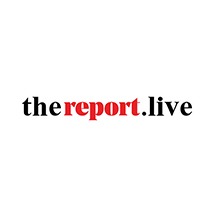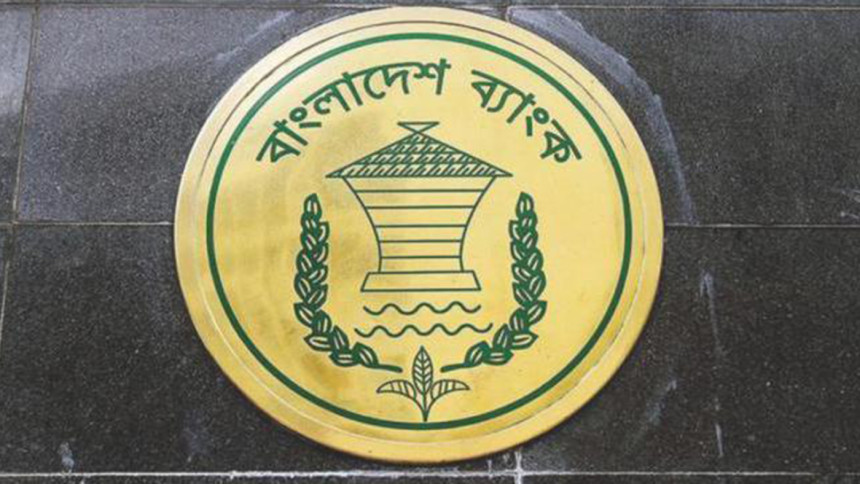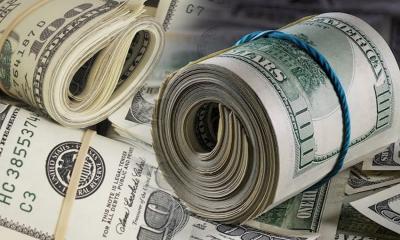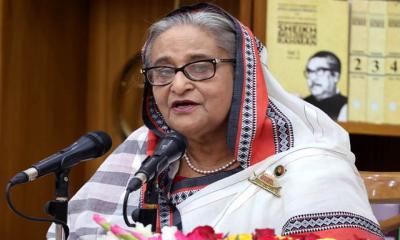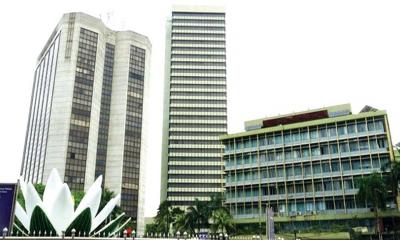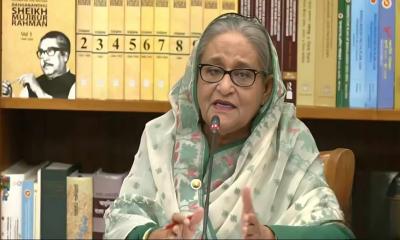The Bangladesh Bank has set a new lending rate formula for commercial banks in which the rate will be fixed based on the weighted average rate of a six-month treasury bill plus a 3% premium, according to The Business Standard.
Bankers were informed about the new formula in a meeting presided over by Bangladesh Bank Governor Abdur Rouf Talukder on Sunday.
The new formula, dubbed "smart short-term moving average rate", will come into effect in July this year, lifting the single-digit lending rate cap.
Currently, the six-month treasury bill rate stands at 6.99%, and adding a 3% premium to this will result in a lending rate of 9.99%.
Md Mezbaul Haque, executive director and spokesperson of the Bangladesh Bank while briefing reporters after the bankers' meeting said there are two or three auctions of six-month treasury bills every month and the central bank will set a weighted average rate from those auction rates and additional 3% will be added to it for commercial lending.
He said the new formula will be announced in the next monetary policy that will be announced this June. The central bank will declare the lending rate every month, he added.
Mentioning that a 3% corridor rate, or premium, might be added to the current weighted average treasury bill interest rate (6.99%) in setting the new lending rate, he said the central bank will determine how this rate will be.
"The corridor rate is also variable, it is not fixed," he, however, said, adding that the central bank will fix this rate after reviewing the market.
"This is because, if the treasury bill rate comes down to 1%, then it will not be possible for any bank to give out loans at 4% interest by adding a 3% corridor rate to the 1% treasury bill rate," he maintained.
The central bank is doing some more experiments, said Mezbaul and added that announcements in this regard will be made in the forthcoming monetary policy.
"Everything else will be determined by the commercial banks based on the customer-banker relationship," he said.
He further said that the central bank will also set the highest ceiling of interest rate on consumer loans.
Currently, the central bank is monitoring the opening of import letters of credit (LCs) worth $3 million or above as part of its measure to save dollars amid volatility in the foreign currency market, noted Mezbaul.
"Our main objective is to fix pricing, so as to resist overpriced imports. And we observe that currently 1,500-2,200 LCs are being opened daily as before, but the value of LCs has decreased to $5.5 billion per month from $8.5 billion due to our monitoring. We think this is our big success."
Now the central bank is focusing on export value, he said, adding, "We want to see if we are getting the right prices for the exported products."
On the dollar rate, he said, "We are already close to implementing the single rate. The single rate, however, does not mean one rate but all the rates will be within the 2% band. Although all the dollar exchange rates including on remittances and export proceeds have come within the 2% band, the dollar selling rate of the central bank is still low. We will gradually make it market-based."
The International Monetary Fund (IMF) has suggested that the Bangladesh Bank go for a flexible interest rate targeting-based monetary policy, shifting from its monetary targeting framework as the existing model has been unable to check inflation through money supply targets only, amid an onslaught of external factors.
The IMF mission came up with the suggestion when visiting Bangladesh in November last year as part of a discussion over the terms and conditions of a prospective $4.5 billion loan sought by the Bangladesh government.
The central bank agreed to transform its monetary policy framework gradually by 2026.
The IMF suggested lifting the lending rate cap and going for a new monetary policy framework, which the Bangladesh Bank agreed to. As part of that agreement, the central bank has set a new lending rate formula.
10 banks warned for ignoring Bafeda-set remittance rate
In the bankers' meeting, the Bangladesh Bank strictly instructed commercial banks not to offer a higher rate than the rate set by the Bangladesh Foreign Exchange Dealers Association (Bafeda), said a meeting source.
Some banks offered the dollar rate up to Tk117 for remittance while the Bafeda-set rate is Tk107, according to industry insiders.
According to the meeting source, the governor warned of auditing the banks which offered higher rates to remitters ignoring the set rate. In the audits, the central bank will look at whether those banks passed the higher remittance cost to importers, fueling inflation.
The central bank held a separate meeting with 10 banks that were identified for ignoring the Bafeda rate.
In the meeting, bankers admitted that they offered higher rates to avoid default in LC payments amid the dollar crisis, according to the meeting source. They committed to not ignoring the Bafeda rate in the future.
Bankers in the meeting claimed that though they bought remittances at a higher price they sold dollars to importers and exporters at a lower rate taking losses on their own, said the meeting source. In this perspective, the central bank will audit if they are telling the truth.
While speaking with The Business Standard, a private commercial banker said that some 26 banks ignored the Bafeda rate but only 10 were summoned to the meeting. The 10 banks promised that they will not ignore the rate and if others do the same, discipline will be restored in the market, he added.
He also said that his bank incurred an operating loss of nearly Tk90 crore in four months from December last year to March this year from exchange loss. This is because, he said, the bank bought remittances at a higher rate but settled LC at a lower rate.
Banks had to offer higher remittance rates as Bangladesh Bank supplies 10% of their dollar demand, he further said.
Further explaining why banks had to offer higher remittance rates, the banks told TBS that his bank used to receive remittances to the tune of $70 million to $80 million per month previously, which came down to $18 million after the Bafeda set the remittance rate. As a result, the bank fell short of nearly $70 million dollars monthly for LC payments. In this situation, his bank offered a higher rate to meet LC payment requirements.
He went on to say that the average monthly payment of every bank currently stands at $150 million to $250 million, but the figure will come down to nearly $50 million to $60 million from June due to a fall in fresh LC opening. As a result, banks will no longer need to offer higher rates.
How dollar rate impact remittance inflow
Some banks which followed the Bafeda rate lost half of their remittance inflow as remitters switched to other banks which offered a higher rate.
For instance, remittance inflow through Eastern Bank fell to less than $1 million in March which was nearly $9 million in September last year as the bank offered the Bafeda rate.
On the other hand, National Bank, one of the 10 banks which offered a higher rate than that set by Bafeda, saw a 122% rise in remittance inflow in March from September last year.
The bank received $81 million in remittances in March which was $36 million in September last year, central bank data shows.
Total remittance inflow through the banking channel dipped to below $2 billion in September last year after Bafeda set the remittance rate at Tk107 as remitters were getting above Tk110 per dollar in the informal channel.
In this situation, banks fell into a severe dollar crisis and went for offering higher rates to catch the dollar, said industry insiders.

